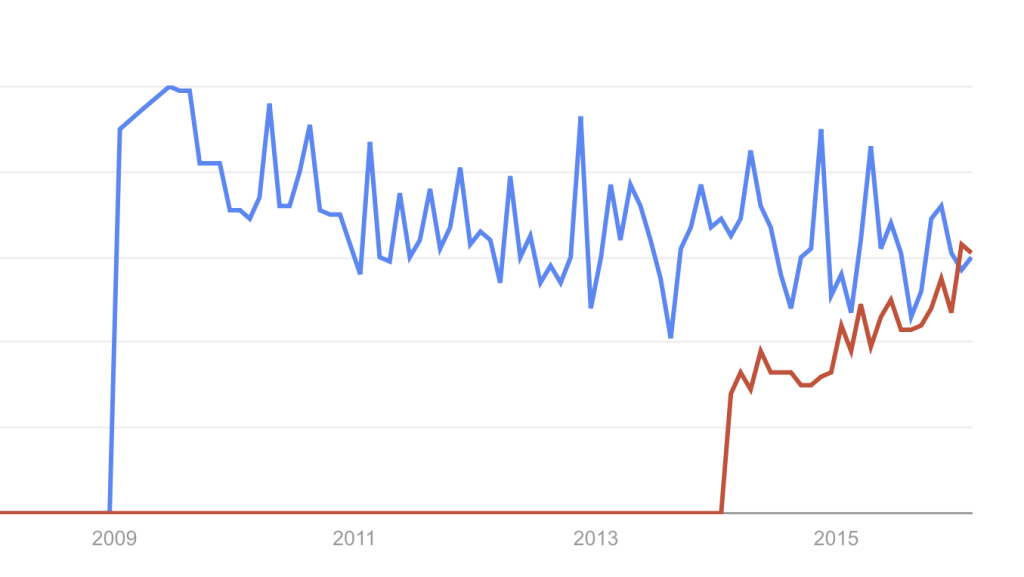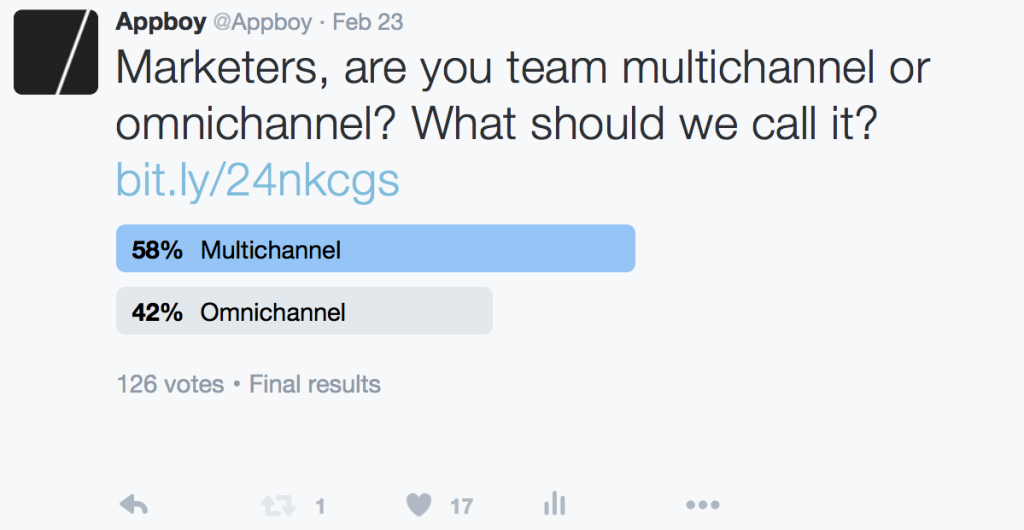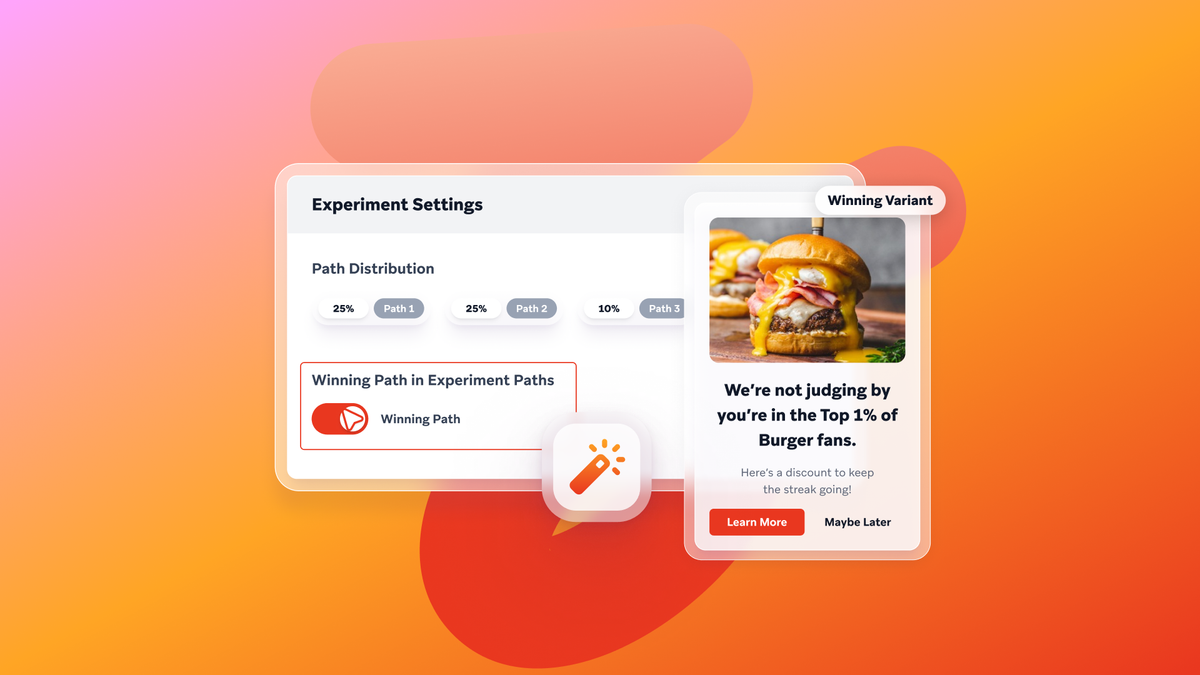Multichannel vs. Omnichannel Marketing: Is There a Difference?
Published on February 22, 2016/Last edited on February 22, 2016/7 min read


Todd Grennan
Content Production Principal, Content Marketing at BrazeThe marketing landscape just keeps shifting. New platforms, new messaging channels, new emerging technologies. These changes are creating intriguing new ways to engage customers, but they’re also making it easier for marketing outreach to fall through the cracks. To keep your brand/customer relationships strong, it’s important to take advantage of multichannel marketing. Or maybe omnichannel marketing. Or possibly both. (Can you do both?)
Some people say multichannel and omnichannel marketing are different. Some say they’re the same thing. A few say they’re the same and also different in the course of a single article. So it’s possible that you might be confused.
That’s cool. We’re here to clear everything up.
What are multichannel and omnichannel marketing?
Multichannel marketing
“Multi-” means “multiple” or “many,” so a multichannel marketing strategy is one that uses more than just a single channel to reach customers. That can be as a simple as adding push notifications to your existing email marketing, or it can be as complex as coordinating a campaign involving integrated mobile (push, in-app messages, and News Feed Cards), web (web push and in-browser messages), email, and in-person outreach. In either case, the goal is to engage your customers more effectively.
Omnichannel marketing
“Omni” means “all,” so an omnichannel marketing strategy uses every messaging channel to engage customers in a coordinated way. That means that if you have a customer who visits your brand’s mobile website on their smartphone while browsing items at one of your stores, you can reach them with email, mobile push notifications, web push, in-browser messages, or in-person outreach, with the goal of engaging that customer more effectively.
That’s… wait, how are omnichannel and multichannel marketing different, exactly?
Good question. Basically, there are two schools of thought:
1.Pro-omnichannel: This school of thought holds that multichannel marketing is a distinct term and that it involves using multiple messaging channels at the same time to reach customers. But, in this view, multichannel marketing doesn’t include coordination between between those different channels—for THAT, you need omnichannel marketing, which combines all your messaging into a holistic, multifaceted whole.
2.Pro-multichannel: This school of thought, on the other hand, thinks that’s just absurd. Sure, a brand COULD execute a multichannel marketing strategy by having one team sending email and another team sending push notifications without ever actually talking to each other, but that doesn’t mean that’s what most people are trying to convey when they use the term. Give multichannel some credit! A multichannel marketing campaign SHOULD be coordinated. Otherwise, what’s the point?
Thanks, Todd—could you use omnichannel and multichannel marketing in a sentence?
Of course. How about four sentences?
Jack Simpson, Econsultancy: “Multichannel marketing is becoming increasingly important as technology evolves and people consume content in so many different ways.”
Charles Sudo, Bisnow Media: “Omnichannel marketing allows consumers to engage with a company through a physical location, online or via a mobile app, via a catalog or through social media, fulfilling orders and fielding customer service requests seamlessly regardless of the medium.”
Gil Klein, Matomy Media Group: “Utilizing a multichannel approach to your digital marketing campaigns will give you the ability to engage, acquire, and retain different demographic groups according to the user behavior within specific media channels.”
Daniel Newman, Broadsuite: “Before you get started with your omni-channel marketing approach, you need to have a proper data strategy in place to be able to collect and gain insights from the information that’s pouring in from all corners.”
Hey, that last guy used a hyphen in the middle of “omnichannel”! Is that the correct spelling?
Nobody agrees on that, either. In general, you’re going to find more people spelling multichannel and omnichannel without the hyphen, but plenty write it the other way. (Not us, though—Relate is anti hyphen in general. Hyphens are becoming passé, anyway.)
How did we end up with competing terms for marketing across different channels, anyway?
Let’s start at the beginning. Or, rather, let’s start in 2009:

Google Trends results for multichannel marketing (blue) and omnichannel marketing (red)
That’s when Google first started seeing a significant number of searches for “multichannel marketing.” (Searches for “multichannel” go back all the way back to 2004 and probably earlier, but a lot of the searches were actually for multichannel audio and other things not exactly essential to your marketing efforts.) 2009 is also the year that Apple began supporting push notifications on the iPhone, setting the stage for the rich mobile messaging options that brands have today.
That makes sense, because mobile has fundamentally reshaped the ways that customers and brands interact. The ubiquity and intimacy of smartphones and tablets has given brands new ways to reach customers, but it’s also added to the number of screens and platforms that are competing for people’s eyeballs. To break through, marketers have to find ways to capture their customers’ attention wherever they can and demonstrate their brand’s value. That’s a lot easier when you have a marketing strategy that leverages a variety of channels in a coordinated way.
So, if we already had a term to describe that kind of marketing approach—namely “multichannel marketing”—where did “omnichannel marketing” come from?
The short answer is that this kind of thing just happens sometimes. A group of people aren’t satisfied with the existing term and begin using a new one that they feel fits better.
Consider the word “bisexual.” It was coined in 1892 in order to describe people who are sexually attracted to men and women and it’s still used today for that purpose. But some people who are attracted to both men and women use the term “pansexual” to refer to to themselves. That term was coined years later and usually refers to people who are attracted to people regardless of gender. Some people argue that “pansexual” is more inclusive, because it can also cover attraction to genderfluid and transgendered people; others argue that “bisexual” already describes that sort of attraction and there’s no need for another term.
While the situation is of course different, we’re seeing a similar type of disagreement here. People who think that “multichannel marketing” effectively conveys a coordinated marketing strategy involving multiple channels are using that term; people who don’t are using “omnichannel marketing” instead.
Omnichannel marketing first showed up on Google Trends in 2014, but it has caught on quickly, even surpassing multichannel marketing for the first time in January 2015. If enough people keep using “omnichannel marketing” and “multichannel marketing,” they’ll both stick around; if one or the other becomes more dominant with time, that term will probably become the default.
Okay, but should I call it omnichannel or multichannel marketing?

Honestly? Follow your bliss. “Multichannel marketing” has traditionally been more popular, so more people may be familiar with it, while “omnichannel marketing” does seem to be gaining steam, suggesting it might be the dominant term in the long run—but then again, neither of these terms were showing up on Google 10 years ago, so who knows? If you have a marketing strategy that takes advantage of multiple messaging channels without coordinating them, the problem you face isn’t what to call it, but the fact that you’re not making the most of the tools at your disposal. Burn.
That’s the main thing: whatever you call it, you should be using it.
These terms emerged because the need for what they’re describing became real and significant. Brands that are doing what they can to reach, engage, retain, and monetize their customers across as many channels as possible in a smart, coordinated way are well-positioned to succeed over the long haul. Brands that aren’t—well, aren’t.

Related Tags
Releated Content
View the Blog
AI A/B testing: Smarter experiments for real-time marketing optimization
October 30, 2025
How AI capabilities in Braze scale growth for financial services
October 29, 2025
Braze named one of America’s Greenest Companies 2026 by Newsweek
